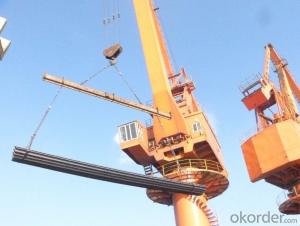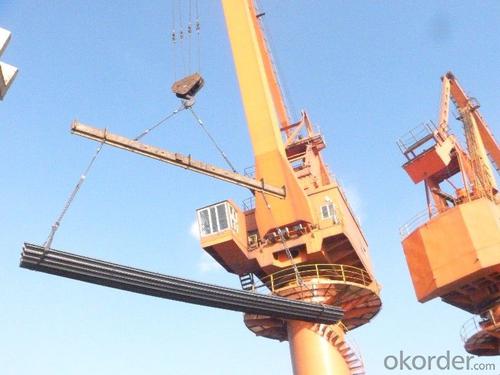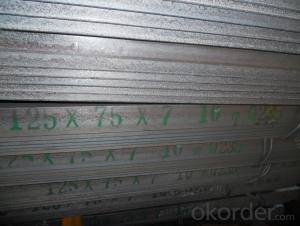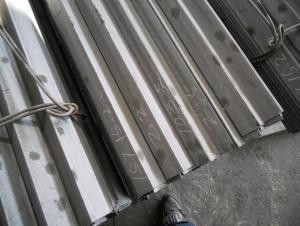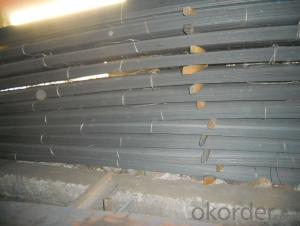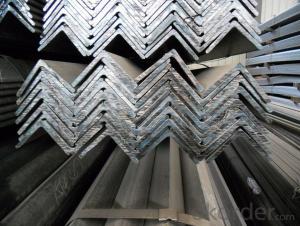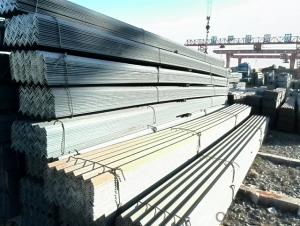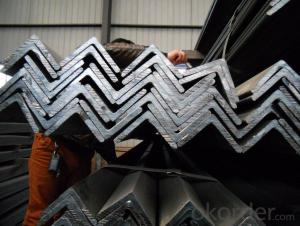Hot Rolled Equal Angle Steel with Many Sizes
- Loading Port:
- Tianjin
- Payment Terms:
- TT or LC
- Min Order Qty:
- 20 m.t.
- Supply Capability:
- 1000 m.t./month
OKorder Service Pledge
OKorder Financial Service
You Might Also Like
Product Description:
OKorder is offering Hot Rolled Carbon Steel Equal Angle at great prices with worldwide shipping. Our supplier is a world-class manufacturer of steel, with our products utilized the world over. OKorder annually supplies products to European, North American and Asian markets. We provide quotations within 24 hours of receiving an inquiry and guarantee competitive prices.
Product Applications:
According to the needs of different structures, Angle can compose to different force support component, and also can be the connections between components. It is widely used in various building structures and engineering structures such as roof beams, bridges, transmission towers, hoisting machinery and transport machinery, ships, industrial furnaces, reaction tower, container frame and warehouse etc.
Product Advantages:
OKorder's Equal Angle are durable, strong, and resist corrosion.
Main Product Features:
· Premium quality
· Prompt delivery & seaworthy packing (30 days after receiving deposit)
· Corrosion resistance
· Can be recycled and reused
· Mill test certification
· Professional Service
· Competitive pricing
Product Specifications:
1. Invoicing on theoretical weight or actual weight as customer request
2. Length: 6m, 9m, 12m as following table
3. Sizes

Sizes: 25mm-250mm | ||
a*t | ||
25*2.5-4.0 | 70*6.0-9.0 | 130*9.0-15 |
30*2.5-6.6 | 75*6.0-9.0 | 140*10-14 |
36*3.0-5.0 | 80*5.0-10 | 150*10-20 |
38*2.3-6.0 | 90*7.0-10 | 160*10-16 |
40*3.0-5.0 | 100*6.0-12 | 175*12-15 |
45*4.0-6.0 | 110*8.0-10 | 180*12-18 |
50*4.0-6.0 | 120*6.0-15 | 200*14-25 |
60*4.0-8.0 | 125*8.0-14 | 250*25 |
4. Payment terms:
1).100% irrevocable L/C at sight.
2).30% T/T prepaid and the balance against the copy of B/L.
3).30% T/T prepaid and the balance against L/C
5.Material details:
Alloy No | Grade | Element (%) | |||||
C | Mn | S | P | Si | |||
Q235 | B | 0.12—0.20 | 0.3—0.7 | ≤0.045 | ≤0.045 | ≤0.3 | |
Alloy No | Grade | Yielding strength point( Mpa) | |||||
Thickness (mm) | |||||||
≤16 | >16--40 | >40--60 | >60--100 | ||||
≥ | |||||||
Q235 | B | 235 | 225 | 215 | 205 | ||
Alloy No | Grade | Tensile strength (Mpa) | Elongation after fracture (%) | ||||
Thickness (mm) | |||||||
≤16 | >16--40 | >40--60 | >60--100 | ||||
≥ | |||||||
Q235 | B | 375--500 | 26 | 25 | 24 | 23 | |
FAQ:
Q1: Why buy Materials & Equipment from OKorder.com?
A1: All products offered byOKorder.com are carefully selected from China's most reliable manufacturing enterprises. Through its ISO certifications, OKorder.com adheres to the highest standards and a commitment to supply chain safety and customer satisfaction.
Q2: How do we guarantee the quality of our products?
A2: We have established an advanced quality management system which conducts strict quality tests at every step, from raw materials to the final product. At the same time, we provide extensive follow-up service assurances as required.
Q3: How soon can we receive the product after purchase?
A3: Within three days of placing an order, we will begin production. The specific shipping date is dependent upon international and government factors, but is typically 7 to 10 workdays.
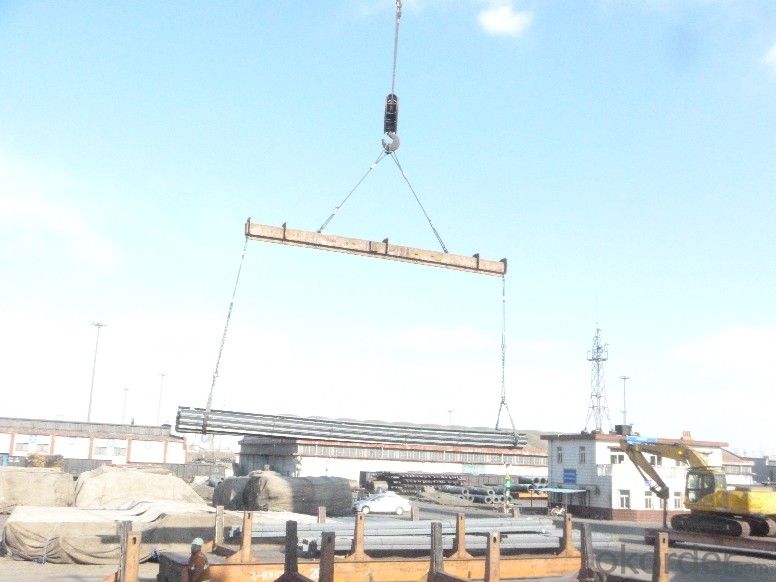
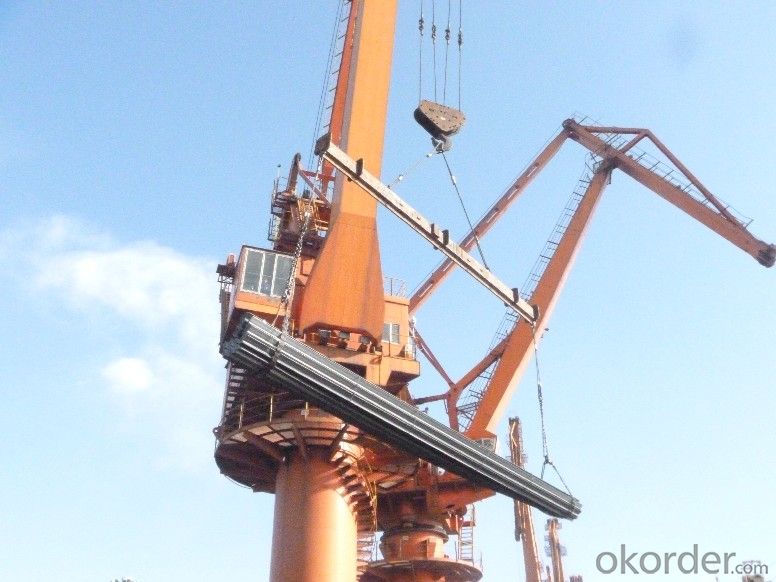
- Q: How do you design connections for steel angles to concrete?
- When designing connections for steel angles to concrete, there are several factors to consider to ensure a safe and efficient design. Here are some key steps and considerations: 1. Determine the loads: Start by identifying the type and magnitude of the loads that the connection will be subjected to. This includes the applied forces, moments, and shear forces. Consider both the dead loads and live loads that will act on the connection. 2. Select the appropriate angle size: Based on the loads, select an angle size that can safely resist the applied forces. Ensure that the selected angle has adequate strength and stiffness for the specific application. 3. Determine the embedment depth: The angle needs to be embedded into the concrete to ensure a secure connection. Calculate the required embedment depth based on the loads and the concrete's compressive strength. Generally, a minimum embedment depth of three times the angle's thickness is recommended. 4. Design anchor bolts: Anchor bolts are typically used to secure the angle to the concrete. Determine the number, spacing, and diameter of anchor bolts based on the applied loads and the desired level of safety. Consider the concrete's strength and thickness when selecting suitable anchor bolts. 5. Provide edge distance and spacing: Ensure that the anchor bolts are positioned with sufficient edge distance and spacing to prevent concrete failure. The edge distance refers to the distance between the center of the bolt and the edge of the concrete, while the spacing is the distance between the centers of adjacent bolts. 6. Consider corrosion protection: If the connection will be exposed to corrosive environments or water exposure, take appropriate measures to protect against corrosion. This can include using galvanized or stainless steel angles and anchor bolts, as well as applying protective coatings. 7. Verify connection capacity: Once the connection design is complete, verify its capacity by conducting a structural analysis or using appropriate design codes and guidelines. Ensure that the connection can safely resist the applied loads without failure or excessive deformation. 8. Detail the connection: Provide clear and detailed drawings and specifications for the connection, including the dimensions, anchor bolt layout, and any additional reinforcement requirements. Ensure that the connection is properly communicated to the fabricator and contractor for accurate implementation. By following these steps and considering the various factors mentioned, you can effectively design connections for steel angles to concrete that meet the required strength, safety, and durability criteria. It is important to consult relevant design codes, standards, and professional engineers to ensure compliance with local regulations and best practices.
- Q: What are the limitations of using steel angles in high-temperature applications?
- One limitation of using steel angles in high-temperature applications is that steel has a relatively low melting point compared to other materials like refractory metals or ceramics. At high temperatures, steel can start to deform, lose its strength, and even melt, leading to structural failures. Additionally, steel can undergo significant thermal expansion and contraction, which can cause dimensional changes and potential cracking in the angles. Therefore, alternative materials with higher melting points and better resistance to thermal expansion may be more suitable for high-temperature applications.
- Q: What are the design considerations for using steel angles in construction?
- When it comes to incorporating steel angles in construction, there are various factors that need to be taken into account. To begin with, the load-bearing capacity of the steel angles plays a vital role. Careful selection of the angle's size and thickness is necessary to ensure that it can adequately support the expected loads and stresses imposed on the structure. This involves considering factors like the weight of the structure, live loads, wind loads, and seismic forces. Another crucial aspect to consider is the connection details. Typically, steel angles are joined together using bolts, welds, or a combination of both. It is imperative to engineer these connections meticulously to ensure effective load transfer between the angles and other structural components, such as beams or columns. Moreover, the connection details should also account for potential movement or expansion of the structure in order to prevent any failure or damage. Furthermore, the potential for corrosion must be taken into consideration during the design phase. Over time, steel angles can corrode when exposed to moisture or aggressive environments. Thus, it is essential to consider appropriate protective measures, such as coatings or galvanization, to enhance the durability and lifespan of the structure. In addition to the technical aspects, the aesthetics and architectural requirements of the project should also be given due thought. Steel angles can be utilized not only for their structural properties but also for their visual appeal. Therefore, the design should consider the desired appearance, including the shape, size, and placement of the angles, to ensure they align with the overall design intent of the structure. Lastly, the cost and availability of steel angles should not be overlooked. The design should aim to optimize the use of steel angles in order to minimize material waste and fabrication costs. It is advisable to select standard sizes and shapes that are readily available in the market, as this can reduce lead times and costs associated with custom fabrication. In conclusion, the design considerations for incorporating steel angles in construction encompass load-bearing capacity, connection details, corrosion protection, aesthetics, and cost. By meticulously considering these factors, engineers and architects can effectively integrate steel angles into the design, resulting in a safe, durable, and visually pleasing structure.
- Q: How are steel angles manufactured?
- Steel angles are typically manufactured through a process called hot rolling, where a steel billet is heated and passed through a series of rollers to give it the desired shape and dimensions. This process ensures that the angles have a consistent and uniform profile, making them suitable for various structural and construction applications.
- Q: What are the common design codes or standards for steel angles?
- The common design codes or standards for steel angles include the American Institute of Steel Construction (AISC) 360, the European Standard EN 10056, and the British Standard BS EN 10056. These codes and standards provide guidelines for the design, fabrication, and installation of steel angles, ensuring structural integrity and safety.
- Q: Can steel angles be used for HVAC ductwork?
- Indeed, HVAC ductwork can utilize steel angles. In the construction field, steel angles are frequently employed for diverse purposes, such as acting as supports and reinforcements. In terms of HVAC ductwork, steel angles can serve as a framework, ensuring stability and bolstering the ducts. Through welding or bolting, they can be joined together to create a robust and enduring structure for the ductwork system. Moreover, steel angles can be easily tailored and cut to specific lengths, making them suitable for various configurations of ductwork. Nevertheless, it is crucial to bear in mind that appropriate insulation and lining might be necessary for steel angles to prevent condensation and maintain the desired temperature within the ducts.
- Q: What is the standard length of a steel angle?
- The standard length of a steel angle is typically 20 feet or 6 meters.
- Q: How are steel angles protected against corrosion?
- Steel angles can be protected against corrosion through various methods. One common method is the application of a protective coating. This can be done by painting the steel angles with a corrosion-resistant paint or by applying a zinc coating through a process called galvanization. Galvanization involves immersing the steel angles in a bath of molten zinc, which forms a protective layer on the surface of the steel. Another method to protect steel angles against corrosion is by applying a corrosion inhibitor. This involves adding chemicals or compounds to the steel angles that prevent or slow down the corrosion process. Additionally, proper maintenance and regular inspections can help identify and address any signs of corrosion before it can cause significant damage.
- Q: What is the maximum thickness of a steel angle?
- The maximum thickness of a steel angle is typically determined by the manufacturing process and the specific requirements of the application. Generally, steel angles can range in thickness from 1/8 inch to several inches. However, it is important to note that the availability of thicker steel angles may vary depending on the supplier and the specific grade of steel being used. In order to determine the maximum thickness of a steel angle for a particular project, it is recommended to consult with a structural engineer or a steel supplier who can provide guidance based on the specific requirements and load-bearing capacities needed.
- Q: How do you determine the appropriate length of a steel angle for a specific application?
- Determining the appropriate length of a steel angle for a specific application involves considering several factors. Firstly, you need to assess the structural requirements of the application. This includes analyzing the loads and forces that the steel angle will be subjected to. You should determine the maximum load capacity the steel angle needs to support and ensure that its length can adequately distribute the load without excessive deflection or failure. Secondly, you should consider the dimensions and layout of the application. Measure the available space and determine how the steel angle will fit within the overall structure. Consider any constraints such as adjacent components or obstructions that might affect the length of the steel angle. Next, you should consult relevant engineering and construction standards. Codes and guidelines provide recommended design values and specifications for steel angles based on their intended use. These standards can help you determine the appropriate length based on the application requirements and the material properties of the steel angle. Additionally, it is important to consider the fabrication and installation process. Evaluate the manufacturing capabilities and limitations, as well as any specific requirements for joining or fastening the steel angle. This will help determine if the desired length is feasible and practical in terms of fabrication and installation methods. Finally, it is advisable to consult with a structural engineer or a qualified professional in the field. They can provide expert advice and calculations based on the specific application, ensuring that the chosen length of the steel angle meets all necessary safety and performance requirements. In conclusion, determining the appropriate length of a steel angle for a specific application involves analyzing the structural requirements, considering the dimensions and layout, referring to relevant standards, evaluating fabrication and installation processes, and seeking professional guidance when needed.
Send your message to us
Hot Rolled Equal Angle Steel with Many Sizes
- Loading Port:
- Tianjin
- Payment Terms:
- TT or LC
- Min Order Qty:
- 20 m.t.
- Supply Capability:
- 1000 m.t./month
OKorder Service Pledge
OKorder Financial Service
Similar products
Hot products
Hot Searches
Related keywords
